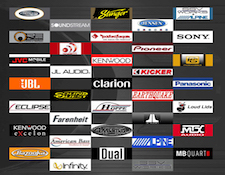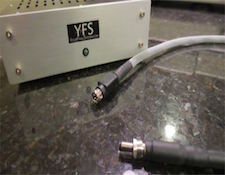It’s the time of year for saving money!
It’s the middle of summer, which in the audio world has always been the slow season. But if you peruse EBAY or Audiogon you will see lots of used gear for sale. On a Monday morning I was doing just that when a thought hit me – Are some names for audio gear better than others? Do particular naming methodologies work more successfully than most?
 As an example of the two extremes of audio gear naming I’ll use two fine firms, Accuphase and Manley Labs.
As an example of the two extremes of audio gear naming I’ll use two fine firms, Accuphase and Manley Labs.
Accuphase has, since their first products, used a simple method consisting of a letter then a number such as P-300 or E-230. In Accuphase’s world a P stands for a basic power amplifier while E stands for an integrated amplifier. This is the way many manufacturers “name” their gear. It has an advantage that consumers who are familiar with the manufacturer’s nomenclature can immediately tell what kind of component something will be. The problem is that uninitiated buyers have to do some homework to figure out how the system works. Also at a certain point even audiophiles who are familiar with the company will need to do homework to determine the differences between say an E-320 and an E-370. These names won’t make anyone feel all warm and fuzzy and don’t add to a product’s cache or personality.
 The other extreme in naming methodology is used by Manley Labs is to name every consumer product after a different species of fish. Manley has an ocean-sized school of aquatics including Mahi Mahi, Steelhead, Chinook, Jumbo Shrimp, Snapper, and Stingray. Obviously this naming methodology has a degree of whimsy that numbers and letters lack. And once you know what a Snapper is, for instance, you’re unlikely to mix it up with a Chinook. Another advantage of using this methodology is that it established a strong brand personality that differentiates Manley from other manufacturers.
The other extreme in naming methodology is used by Manley Labs is to name every consumer product after a different species of fish. Manley has an ocean-sized school of aquatics including Mahi Mahi, Steelhead, Chinook, Jumbo Shrimp, Snapper, and Stingray. Obviously this naming methodology has a degree of whimsy that numbers and letters lack. And once you know what a Snapper is, for instance, you’re unlikely to mix it up with a Chinook. Another advantage of using this methodology is that it established a strong brand personality that differentiates Manley from other manufacturers.
Perhaps it’s more a question of scale and corporate size – larger firms rarely use whimsical names while smaller ones often do, even when they might be better off with numbers. Sometimes I have to question the wisdom of some corporate names such as “Your Final System” for instance. I get the point – they feel their gear will be so good that you will never need to move further upmarket. But it could also be interpreted as a negative as in “your last system before you die.” That’s very likely not what they intended by way of a subliminal message…
 Some audio companies come up with a name for a component and then keep it seemingly forever. Audio Research is known almost as much for their alphabet soup nomenclature as their fine sound. At one time it seemed as if every new AR component went through multiple incarnations of A, B,C, D, and E (often with a newer version coming out before customers who had purchased the previous version had received their units.)
Some audio companies come up with a name for a component and then keep it seemingly forever. Audio Research is known almost as much for their alphabet soup nomenclature as their fine sound. At one time it seemed as if every new AR component went through multiple incarnations of A, B,C, D, and E (often with a newer version coming out before customers who had purchased the previous version had received their units.)
Is there one naming methodology that can deliver more results on the sales floor than others? Probably not. Because a name, after all, is merely a title, not a description, or a feature set. And as Schiit Audio has proven, audiophiles have no issues with even the most obviously off-color names.
So in the end names don’t mean much. They do make it easier (in theory) to differentiate product A from product B, but trying to remember all the names and numbers attached to any mature company’s product line (such as Sony for instance) has gotten to the point where only a savant whose specialty is remembering long multi-lettered and numbered names can possibly remember them all. I gave up trying in 1998…






